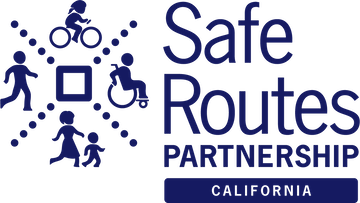
The Strategic Growth Council (SGC) has released revised guidelines for the Affordable Housing Sustainable Communities program in advance of a third round of funding expected this summer. The program funds grants for active transportation as part of larger affordable housing developments, transit-oriented developments and integrated connectivity projects. The funds come from cap-and-trade revenue (the Greenhouse Gas Reduction Fund, a.k.a. California Climate Investments Program) so reducing greenhouse gas emissions is a key criteria in grant selection. Comments on the guidelines are due April 14 and the SGC board will adopt them at their June 1 meeting. The call for proposals will likely come out over the summer.

- The draft guidelines
- A summary of changes matrix,
- A memo describing the major changes
- The GHG quantification methodology.
- 1) There is no more concept application. Applicants will submit just one application instead of going through two rounds. Applicants have the option of a one-on-one consultation with SGC staff before submitting to make sure they would be competitive and checked all the boxes.
- 2) The scoring has changed (it is still out of 100):
- There are still 10 points (out of 100) given for active transportation components of a project. The points are now broken out between walking and bicycling improvements, so applicants get up to 5 points for “Safe and Accessible Walkways” and up to 5 points for “Context Sensitive Bikeways.” Up to 4 of those points are given for the length of the project, and up to 1 point is given for how well the walkway or bikeway connects to destinations.
- All projects must include adequate lighting for the transportation components.
- All projects must include an Urban Greening component. In previous rounds, points were given for incorporating urban greening, but now they are required to include it in some fashion.
- All projects must provide free transit passes for residents of the affordable housing. The requirement is one pass per unit for at least three years.
- BikeScore has been removed from the “Location Efficiency” section but Walk Score remains. The use of these tools has been subject to a lot of discussion because they do not always capture essential destinations that residents of an affordable housing development need to go, but for the time being, Walk Score will remain as SGC explores other tools that can do a better job of measuring accessibility.
Other notable changes include:
- The joint/several liability requirement remains, which has been an issue for some agencies and smaller organizations that wish to partner on these projects. But joint applications are no longer incentivized, and transportation partners can demonstrate prior experience with a developer through a previous/existing contract with a local jurisdiction or transportation agency.
- The points for anti-displacement policies have been split between residential and business policies, and the points for workforce development have been separated out into their own category.
- Parking costs are ineligible expenses.
- Compliance with a housing element is now required.
- Environmental clearance for transportation projects is now required at time of grant disbursement vs. time of grant application, giving applicants more time to do their environmental review and thus letting more projects be eligible for funding.
Still to be determined is whether there will be some sort of geographical apportionment of the AHSC funds to certain regions in the state. The past two rounds have not had any geographical apportionment but some regions feel they aren’t getting their fair share of these funds. SGC also is waiting to release an exact date for the Notice of Funding Availability until they have more certainty on how much funding will be available this round, given the recent declines in the sale of allowances in cap-and-trade auctions.
Next Steps: SGC will host workshops around the state to gather feedback on the Guidelines in late March and early April. Comments are due by April 14 and the final Guidelines will be adopted on June 1 at the SGC board meeting. We’ll post the dates of the workshops as soon as we learn them.


